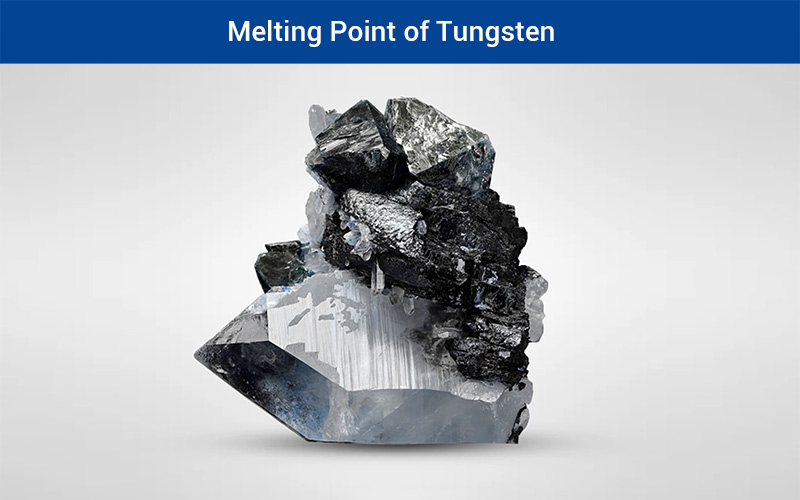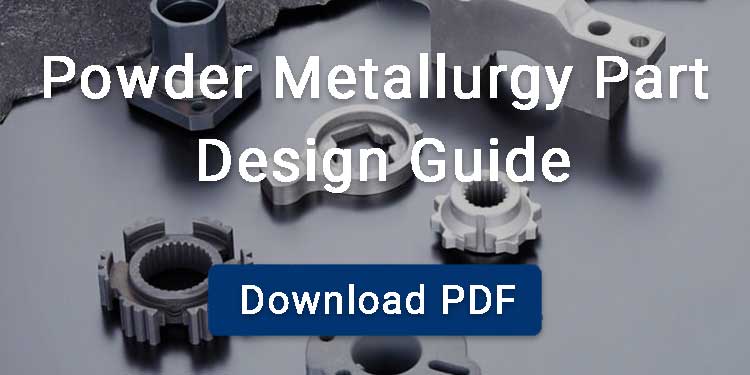Tungsten’s extraordinary Melting Point Of Tungsten—3422°C (6192°F)—enables unmatched performance in extreme environments. This blog delves into why this property revolutionizes aerospace, nuclear tech, and electronics. Discover the atomic science, real-world applications, and future innovations harnessing tungsten’s heat-defying resilience.
Contents
Why We Care About The Tungsten High Melting Point Across Industries
Tungsten’s melt temperature of 3422°C (6192°F) directly contributes to technologies enabling operation in the harshest environments of space and terrestrial deserts—providing practical engineering and safety advantages not available from other materials.
The Impact of Tungsten’s 3422 Degrees Celsius (6192 Degrees Fahrenheit) Melting Point on the Real World
Tungsten safety reserves are indispensable in high-temperature engineering. Steel, for example, such as that used in many bridges, fails at around 1370 – 1540 °C while tungsten will hold itself together at twice that. This extraordinary toughness makes it suitable for spacecraft heat shields, parts of nuclear reactors, and any device that can’t fail easily under extremes of heat.

Why Tungsten Beats Other Metals At Extreme Temperatures
When temperatures are over 2000°C, tungsten inevitably outperforms other refractory metals. For peak performance, tungsten is commonly paired with protective coatings to prevent oxidation. When durability in extreme conditions is required, nothing is more suitable than tungsten.
| Metal | Melting Point (°C) | Relative Strength at 2000°C | Key Limitation |
|---|---|---|---|
| Tungsten | 3422 | High | Needs protection against oxidation above 400°C |
| Tantalum | 3017 | Medium | Susceptible to atmospheric reactivity |
| Rhenium | 3186 | Medium-High | Extremely expensive |
| Molybdenum | 2623 | Low | Weakens above 1600°C |
To enhance these benefits, engineers mate tungsten with barrier coatings, creating heat resistance that is unparalleled while also retaining required environmental durability.
Science As To Why Tungsten Is Resistant To Heat
Due to its atomic structure and low self-diffusion coefficient, tungsten shows thermal stability even in harsh thermal environments. Its very low vapor pressure at high temperatures makes it suitable for vacuum and high vacuum applications, where it is used as a very low rate filler material and to control contamination.
These properties are exploited by designers when evaporation or melting of tungsten might degrade performance or system purity.
Vital Factors Behind Extreme Melting Point of Tungsten
Rare combined structures of tungsten atoms form a superior lattice for thermal conductivity; regarding tungsten’s material density and the means of managing devices, it is primarily a high-performance thermal material.
Atomic Structure and Bonding: The Basis of Thermal Resilience
Tungsten has a body-centered cubic crystal structure which sets the stage for a dense atomic network with impressive metallic bonding. This prevents parts from changing in dimension under temperatures up to 2500°C and prevents warping or softening after cycling.
Manufacturers typically use high-purity tungsten to minimize impurities that would weaken the lattice strength and decrease the effective melting point.
Effect of Electron Configuration on the Heat Properties
Tungsten’s electron configuration enables strong delocalized bonding at its partially filled 5d orbitals. This electronic stability eliminates the possibility of bond rupture under high heat-flux, such as those required for use in plasma or vacuum furnaces.
Where other metals start to fail, tungsten keeps working above 2000°C, thanks to this stout electron configuration.
Effect of the Density to Support the High-Temperature Stability
Tungsten has a high density (19.3 g cm−3), which results in increased atomic bonding and energy required to break this bonding during melting. This property provides resistance to thermal shock, shape retention, and the ability to transfer heat quickly—all key elements for tooling, heat sinks, and extreme-heat systems.
This density and high thermal conductivity provide efficient heat removal and long-term durability during multiple thermal cycles.
Techniques for the Determination and Verification of the Tungsten Melting Point
Only a sophisticated measurement method works under such extreme conditions – the right procedure for proving that even the world’s most demanding technical standards are met.
Laboratory Testing and Instrumentation in Current Scenario
Pulse-heating and electric resistivity measurements indicate tungsten melting according to a significant change in resistivity. Precise infrared cameras for pyrometric imaging add to this approach the possibility of high-resolution temperature mapping. The phase transition has also been justified by DTA (Differential Thermal Analysis), which was carried out using this new mixed molten salt (for all the critical aerospace and nuclear applications).
Advancement of Melting Point Testing in History
Early 20th-century dating was influenced by optical pyrometry, which was far from precise. As technology improved, so did accuracy: blackbody radiation computations in the 1930s and pulse-heating techniques in the 1990s successively trimmed tungsten’s agreed-upon melting point. For comparison, prior to 1950 figures are possibly less accurate (by up to 5%) because of older methods.
Challenges with High Melting Point Material
Classical crucibles melt in the presence of tungsten, so levitation melting (by means of an electromagnetic field) is now being used, which avoids contamination from the container. Exact atmosphere is critical: trace oxygen can create volatile oxides that interfere with readings. Upon rapid heating there is less time for undesired side reactions, which allows a direct measurement of these elusive temperatures.
Industrial and Technological Uses Based on the Melting Point of Tungsten
Its exceptional heat resistance is priceless for processes requiring sustained integrity under extreme thermal conditions.
Aerospace and Rocketry: How to Survive Extreme Heat
The tungsten parts in rocket engines are directly exposed to flames that reach in excess of 3000°C, but they remain undamaged after repeated launches. Tungsten-based heat shields cool portions of the vehicle to <2500°C during atmospheric reentry. Advanced hypersonic vehicles also use tungsten composites to endure aerodynamic heat at Mach 5 and above.
Electronics: Cooling Off Devices and Circuits
Tungsten provides reliable heat dissipation for high-power electronics – tungsten heat sinks and vias help control the temperature of semiconductor chips. Incandescent light bulb filaments exploit tungsten’s low vapor pressure, glowing white-hot, often for thousands of hours. Tungsten-copper as a sandwich honeycomb material controls the expansion cycle of a circuit and reduces circuit fatigue from cycling.
Ultra High Temperature Manufacturing Applications
Tungsten tooling continues to be used to mold glass and form metal at higher temperatures than which other conventional tool materials would survive. Tungsten industrial furnace elements operate up to a temperature of 2800°C to produce ceramics. Tungsten electrodes are used in welding to create a clean, precise joining that does not damage sensitive metals.
NuclearTech: Pushing the Thermal Limits of Tungsten
Gamma shields in reactors made of tungsten retain their structural, protective properties at fast and high temperature ramps. Fusion research facilities, such as ITER, rely on the inertness and long-term stability of tungsten as a plasma-facing material. Tungsten cladding is used on space propulsion systems to house radioactive fuel at temperatures exceeding 2500°C.
Processing Difficulties and Solutions for High-Melting Point Tungsten
Tungsten superheats, and its endothermic point requires ultra-specialized processing across all stages of industrial fabrication.
Machinery for Tungsten Working
High-temperature furnaces with molybdenum, tantalum, or graphite heating elements in a controlled atmosphere (vacuum, hydrogen) are used for the processing of tungsten free from oxidation. The material is extremely hard and can only be processed by grinding with tungsten carbide or diamond cutting edges. In case of complex geometries, processing with electrical discharge machining (EDM) should be used to prevent mechanical stress. When working with liquid tungsten, use a crucible made of thoriated tungsten or stabilized zirconia to maintain purity and prevent cross-contamination. Induction heating devices with a water-cooled coil enable accurate temperature control at all cooling stages.
Powder Metallurgy: Traditional vs Advanced Manufacturing
Powder metallurgy process is the common way for the fabrication of tungsten-based components. Start with hydrogen reduction of tungsten oxides to yield fine metal powders, compact the powders, and sinter at ~2500°C for high density. Further enhance the density and mechanical strength by hot isostatic pressing (HIP). For parts with complex geometries, use methods of metal injection molding (MIM). Spark plasma sintering is suggested for a fast densification process and better microstructure, leading to stronger components than conventional methods.
Welding, Joining and Fabrication for High Temperature Environments
TIG welding using thoriated tungsten electrodes yields secure joints if the base materials are pre-heated to 400–600°C and then slow-cooled to avoid cracks. Diffusion bonding at elevated temperatures can be used for sound, continuous joints. Tungsten and other metals are successfully joined by brazing with platinum or palladium alloys. Electron beam welding is used in a vacuum for the most accurate, low distortion joints, such as those used in nuclear applications. When a mechanical fix is necessary, choose fasteners such as molybdenum or rhenium matching the thermal expansion of tungsten.
Effect of Alloying on Melting Point of Tungsten
By selectively adding alloying elements to tungsten, performance characteristics can be tailored for selected high-temperature uses.
Common Tungsten Alloys and Their Specific Characteristics
W–Re alloys (3–26% Re) have a high melting point and exhibit better ductility and weldability. W-25Re is used for rocket nozzles and nuclear applications requiring high thermal shock resistance. With lower temperature capability by comparison, tungsten heavy alloys (typically 90–97% tungsten with nickel, iron, and/or copper) offer increased machinability and provide radiation shielding for aerospace and medical components. Cemented WC–Co is the material of choice for cutting and wear-resistant tools; titanium, tantalum, and niobium carbides increase stability against high temperatures and oxidation in hostile environments.
Selection between Pure Tungsten and Alloys under Different Conditions
Apply pure tungsten where the highest melting point and maximum heat resistance are necessary, such as fusion reactor components. For electric heating elements, their doped forms retain their structure under load. Tungsten-rhenium alloys are used when ductility and moderate temperatures up to 2000°C are required, e.g., for thermocouples. Choose tungsten heavy alloys if impact toughness and consistency are more important than melting point, such as kinetic energy penetrators or for radiation shielding. For corrosive, high-temperature conditions, tungsten-molybdenum alloys resist acids well and can carry high-temperature loads. In applications requiring complex machining, select cemented tungsten carbides (WC) combined with cobalt (Co) for the best balance of hardness and workability.
Effect of Alloying Elements on Melting and Characteristic Impact
The slight reduction in melting point is accompanied by a 200–300°C increase in recrystallization temperature due to the formation of a solid solution with W, giving increased ductility under cyclic thermal loading, which may be deduced from values for rhenium alone having a minor melting point depressant effect on tungsten. Molybdenum improves the material’s machinability and reduces the brittleness, maintaining best performance even at temperatures of 1600°C. Compounds: Hafnium carbide creates super high-temperature tungsten composites for aerospace leading edges and advanced propulsion, maintaining structural stability above the softening temperature of pure tungsten.
Safety Considerations and the Monitoring of Tungsten at High Temperatures
Physical Description: It is strongly advised within the tungsten community to have strict safety procedures, personal protective equipment (PPE), and high-quality safety training in place when using these intense-heat processes. It is known that I2 is formed in these structures from being released from the sidewalls, for example.
Personal Protective Equipment (PPE) and Good Practices
Wear aluminized heat suits for work above 1000°C near molten tungsten. Wear visors with gold-plated, silvered glass to protect against infrared radiation, and use HEPA-filtered respirators to protect the lungs from inhaling tungsten dust. Never work alone. Partner with a buddy and educate employees about how contact between tungsten powder and water is a fire and explosion hazard.
Safe Workplaces and Risk Reduction
Isolate keep-warm areas with thermal barriers and use IR-triggered alarms to detect instantaneous temperatures. Utilize lockout/tagout and allow all apparatus to cool to less than 50°C before maintenance access. Maintain positive pressure ventilation with wet scrubbers or electrostatic precipitators to minimize emissions of tungsten particles into the exhaust system.
Environmental Effects of High-Temperature Processing
Establish collection systems for tungsten dust and scrap recycling with a recovery rate above 98%. Monitor stack emissions for tungsten particulates at all times and shut down if over benchmarks. Design cooling systems for closed-loop operation to minimize the use of water, while using ion exchange or precipitation to treat wastewater (99.5% removal efficiencies).
Table Comparing the Melting Point of Tungsten and Other Metals
The table following compares tungsten to other high-temperature metals and shows tungsten’s superiority for use in extremely hot conditions.
| Metal / Alloy | Melting Point (°C) |
|---|---|
| Tungsten Melting Point (W) | 3422 |
| Silver Melting Point (Ag) | 962 |
| Bronze Melting Point (Cu–Sn alloy) | 950 – 1050 |
| Copper Melting Point (Cu) | 1085 |
| Titanium Melting Point (Ti) | 1668 |
| Nickel Melting Point (Ni) | 1455 |
| Iron Melting Point (Fe) | 1538 |
| W-25Re Melting Point | ≈ 3100 |
Its extraordinarily high melting point is what gives tungsten its strength and resilience when all other metals would bend, soften, or even melt.
Tungsten is indispensable to high-temperature engineering and has a high thermal expansion capacity. Even as an alloy, it still maintains a good portion of its thermal benefit while offering improved handling or workability.
Future Frontiers: Innovations and Research Pushing the Boundaries of Tungsten
Here, we look at how tungsten’s unique point of fusion is paving the way for the next generation of engineering and developing key technologies within sectors such as aerospace and sustainable energy.
Next-Gen Solutions Based on High Melting Points
Hypersonic vehicle heat shields, which retain their stability at temperatures greater than 2000°C and are also resistant to extreme thermal conditions, use nickel superalloys and tungsten-rhenium alloy in aerospace engineering applications.
Nuclear-fusion reactors have tungsten parts to cope with the 15 million°C temperatures in containment vessels – such as ITER’s divertor plates, which can withstand erosion by hydrogen plasma.
Additive manufacturing allows for intricate tungsten parts with internal cooling channels, maximizing heat dissipation in rocket nozzles and turbine blades while slashing weight.
Advances in High-Temperature Materials Science
Tungsten-tantalum nanocomposites with engineered grain boundaries have been developed by MIT researchers to increase creep resistance by 65 percent near 2500°C and increase component lifetime over cyclic extremes.
UHTCs, such as tungsten disilicide and zirconium boride, self-heal above 1800°C into protective scales essential for reentry-vehicle safety.
Chemical vapor-deposited diamond films with tungsten addition provide superior thermal conductivity and wear resistance, providing three- to ten-fold service life increase compared to traditional options in high-speed applications.
Green and Sustainable Energy Applications of Tungsten
High-temperature operation (1500°C) of tungsten reflectors and primary concentrators saves costs for Concentrated Solar Power Plants and reduces the potential size of such systems.
Tungsten-nanoparticle catalysts can turn water into hydrogen at 87 percent efficiency, operating at more than 900°C, and last five times longer than platinum.
Tungsten-based phase-change materials support thermal energy storage at over 1000°C with low degradation over thousands of cycles and can help to balance renewable energy resources to supply at 94% round-trip efficiency.
FAQ
Why Is the Symbol for Tungsten W?
The symbol W is derived from “wolfram,” the mineral’s historical German name, which was used in mining and early chemistry.
What Problems Are There When Tungsten is Melted for Industry
The melting of tungsten requires the use of Vacuum Arc or electron beam furnaces that exceed 3422°C. The hazards of crucible contamination, rapid oxidation, and excessive energy consumption make powder metallurgy a preferred preparation route.
What Is Tungsten’s Boiling Point?
Wolfram boils at about 5930°C (10,706°F), the broadest range of any metal for high-temperature processes.
Welding Performance of Tungsten Electrodes and Their Melting Point
With a melting point of nearly 3400°C, tungsten electrodes have excellent shape retention, meaning they withstand tip wear very well in TIG welding and make quality welds with limited contamination.
Can the Melting Point of Tungsten Be Changed for a Specialized Application?
Mixing tungsten with rhenium reduces melting point and improves ductility. PCB technologies use BeNi to make tungsten-copper composites for electronics, with adjustable melting temperatures achievable by altering the composite composition.



